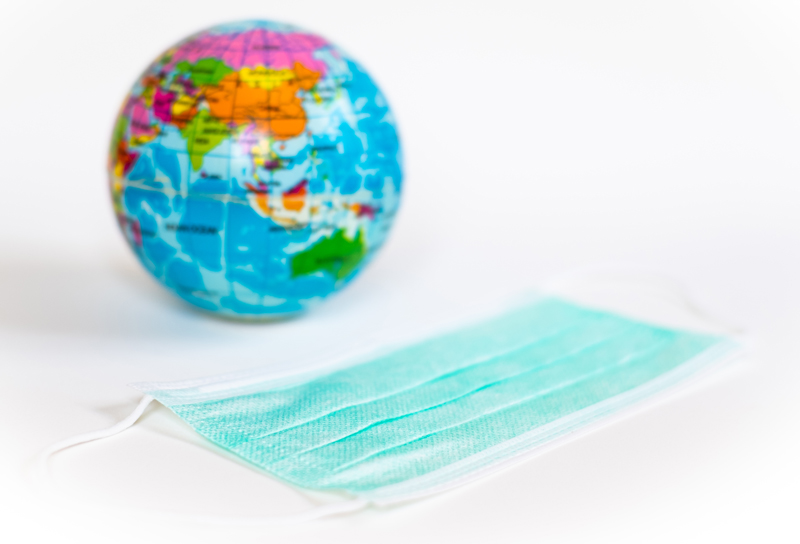No doubt, ophthalmology has felt the effects of the worldwide pandemic. During this session from the ASEAN Ophthalmology Society (AOS), we explore the impact in Southeast Asia.
In Indonesia
Dr. Rina Ladistia Nora spoke about a study of COVID-19 on dry eye she recently headed, as well as the effect COVID-19 in Indonesia, which has suffered almost 2 million cases and 54,000 deaths.
Early in the pandemic, the Indonesian Ophthalmologists Association’s (IOA) Young Ophthalmologists division became active, with a newsletter and its first online conference, held in April 2020. In addition, the IOA provided guidelines on infection prevention and how to redesign contact areas to reduce risk, as well as best practices for telemedicine.
Dr. Nora’s study on dry eye, which compared COVID-19 positive patients to negative ones, found that subjective ocular surface complaints are more prevalent in COVID-19 positive patients. Further, there is no relationship between subjective ocular surface complaints and objective parameters of dry eye. Additional research is required to prove the presence of inflammation in the eye.
In Malaysia
Next, Dr. Miswan Muiz Mahyudin gave a Malaysian perspective on ophthalmology during the pandemic, which has resulted in 670,000 cases and over 4,000 deaths.
COVID-19 had a particularly bad effect on eye care in Malaysia as all government hospital eye clinics initially closed for 6-8 weeks. When they reopened, consultation numbers were restricted to 20% capacity and the clinics were open fewer days during the week. In addition, one of the major hospitals was converted entirely into a COVID-19 hospital.
When physicians could see patients, there was a lack of government guidance regarding what procedures should be done and how patients should be tested prior to treatment — this resulted in confusion and more cases in hospitals. Today, most healthcare workers are vaccinated, but there’s a spike in “half-managed” cases, where care was interrupted by the lockdown, and mild cases are beginning to show up in moderate/severe states due to poor general care.
In the Philippines
Then Dr. Jessica Abaňo shared how the pandemic has affected ophthalmology practice in the Philippines, which has had over 1.34 million cases.
During the initial lockdown in early 2020, all eye care was suspended and many ophthalmologists were sent by the government to work in COVID-19 wards. Since then, things have improved, and the Philippine Academy of Ophthalmology (PAO) has been extremely active. They have provided physicians with goggles, slit lamp screens and other necessary equipment such as the PPE; given clear advice on how to reduce infection risk; and even produced a series of webinars on telemedicine training and education. They also have an active Facebook page, where they communicate directly with the public, as well as ophthalmologists. In addition, the PAO hosted a virtual exhibition in November 2020.
Now things are improving, they are doing more webinars, advising physicians on how to safely reopen their surgeries, and how to adjust to the new normal.
In Thailand
Lastly, Dr. Pimkwan Jaru-Ampornpan spoke about the COVID-19 and ophthalmology practice in Thailand, where there have been around 170,000 cases resulting in over 1,100 deaths.
During each outbreak, surgeons have been advised to wear masks with eye protection; postpone elective surgeries and non-urgent OPD cases; and ensure all patients are screened prior to surgery or admission. In March 2020, the Royal College of Ophthalmologists of Thailand (RCOPT) sent guidelines to physicians, instructing them to use slit lamp shields; to avoid using air-puff tonometry and immersion A-scan biometry;and practice general social distancing measures. The advice was effective and surveys show over 90% of Thai ophthalmologists were aware and followed this advice.
Today, Thailand has been hit with a third wave of COVID-19 and hospitals are reaching their capacity. However, vaccination is underway, and hospitals are slowly resuming care for non-COVID-19 patients, including those who need eye care.
Editor’s Note: A version of this article was first published in Issue 2 of CAKE & PIE POST, C&PE 2021 Edition. The CAKE & PIE Expo 2021 was LIVE on June 18-19. All sessions are available on demand until July 19 at expo.mediamice.com upon login.



